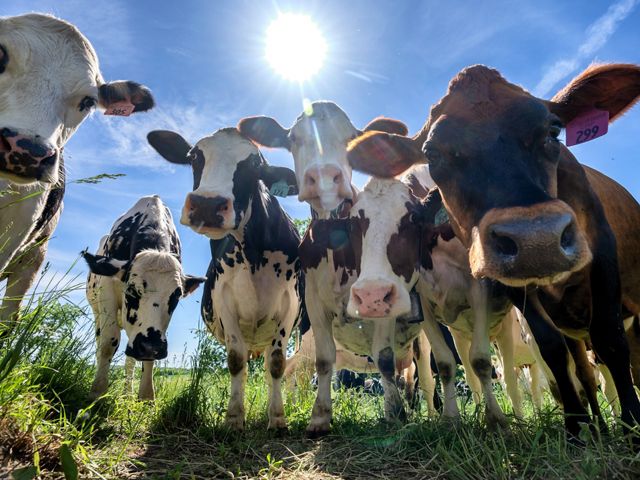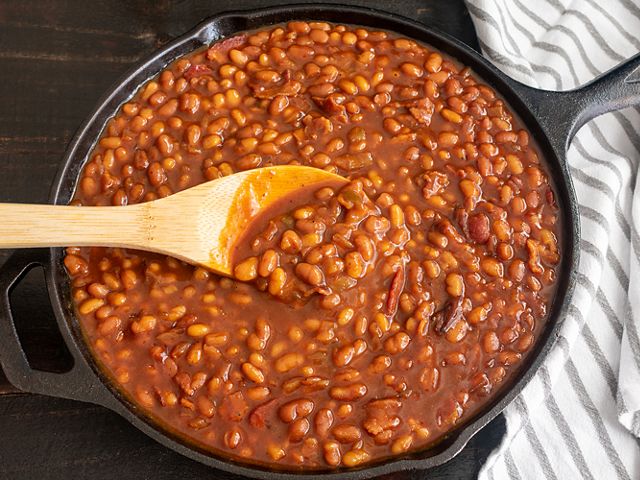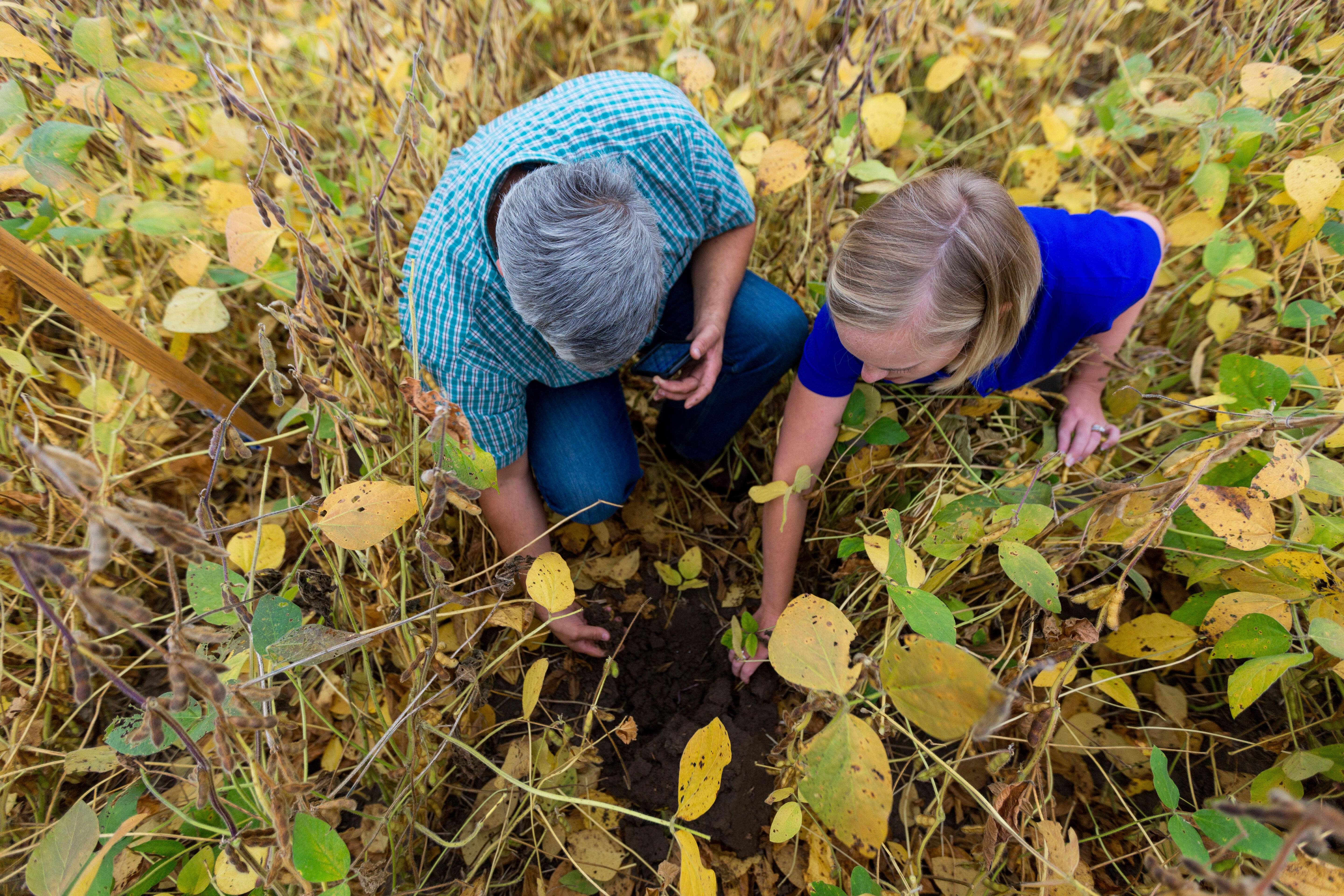
What’s on the Menu?
Farmers across Michigan are implementing sustainable practices that are good for our planet and our stomachs.
We all have to eat. But as the world’s population grows, the challenges our planet and producers face intensify. Food production is a major driver of climate change and biodiversity loss. At the same time, climate change and biodiversity loss are making it much harder to produce food, threatening the livelihoods of producers and ultimately making it more difficult to feed a growing population. To keep our stomachs full and our planet happy, we have to work together.
Michigan is the second most agriculturally diverse state in the United States. From cherries to asparagus, farmers are growing crops that feed the world and contribute more than $104 billion annually to our state’s economy. On top of that, Michigan farmers are actively changing how they farm to support the future of food and our planet.
At nearly every meal, it’s likely at least one item was grown right here in Michigan. Many of these products are produced using innovative solutions that reduce the impact on our environment while securing our food chain. One meal at a time, learn how The Nature Conservancy (TNC) is working with partners to support Michigan farmers.
Breakfast
On the Menu: Pancakes
Ingredient: Soft White Wheat Flour
As you drag your feet out of bed in the morning, you're looking forward to one thing. It’s pancake day. As you begin to pull out all the ingredients you need to whip up a batch of whole wheat pancakes, you notice just how many of these products were produced in Michigan—including the white wheat flour you plan to use for the main dish.
More than 500,000 acres of land in Michigan is used to produce 35.7 million bushels of wheat annually. The cakes you make and the bread you bake all start in these fields. For Star of the West Milling, a Michigan-based grain milling company, the key to producing good grain is focusing on sustainability. That’s why we are working with them to pilot a new performance-based conservation program for Saginaw Bay-area wheat farmers that provides “nature-based bonuses” for wheat grown using sustainable practices. This Sustainable Option Wheat program sets sustainable production standards—participants that successfully meet those standards receive the bonus when they bring their grain to market.

In 2022, the kickoff year for Sustainable Option Wheat, it took the team just two weeks to fill all the available spots. More than 970 acres were enrolled in all, producing more than 86,000 bushels of sustainably grown wheat. With another 1,900 acres enrolled in 2023, that harvest nearly doubled! In the coming years, we hope that Sustainable Option Wheat could provide a “blueprint” for producing and marketing sustainably raised crops that other grain processors (and commodities) could follow.
Lunch
On the Menu: Pizza
Ingredient: Dairy
As you look down at the hot, cheesy pizza on your table, you see classic ingredients like wheat, tomatoes, onions and pork. Any of these products could come from a Michigan farmer! However, one topping in particular is likely sourced right here in your backyard...and that’s the cheese.
Michigan is ranked fifth in the nation for total dairy production, with more than 1,800 dairy farms in the state. As demand for dairy products increases, so does its environmental impact. Thankfully, the dairy industry has long been committed to sustainable farming practices. This legacy continues today through programs like U.S. Dairy Feed in Focus.
A couple different elements impact the environmental footprint of dairy cows—the production of their feed and the methane they emit from digesting that feed. Cows release methane in their burps and methane and nitrous oxide from their manure. By enrolling in the U.S. Dairy Feed in Focus Program, farmers in Michigan and Wisconsin are reducing their climate impact by modifying their feed efficiency and feed production practices. As of early 2023, we’re working with 31 farms, which roughly translates to 9,809 acres and 17,235 dairy cows treated, with $428,500 worth of incentives distributed/pledged to local farmers.

Don't You Dairy to Skip Dessert
Michigan produces enough milk for the entire state, while the excess is exported to other states. So why not finish your meal with a scoop of Michigan's finest ice cream?
Beverage
On the Menu: Lemonade
Ingredient: Sugar beets
It’s a sunny day, and you’re ready to enjoy a nice glass of lemonade. While lemons are not on Michigan’s roster for food production, one key ingredient to lemonade is. Spoonful by spoonful, you add sugar to the pitcher until it is just right.
Not all of the sugar you purchase at the grocery store is cane sugar. Some comes from a root vegetable called a sugar beet. While not popular as a daily serving of vegetables, the root of a sugar beet has a high concentration of sucrose that can be processed into sugar. In 2022, 138,000 acres of sugar beets were harvested in Michigan.
To cut costs and improve efficiency, farmers in the Saginaw Valley are turning to a farming practice called strip tillage to grow sugar beets. Strip till is a system that combines direct seeding and minimum tillage to produce row crops. Taking this approach has benefits for both farmers and conservation. It saves time and money, requires less horsepower, improves soil tilth and quality, and reduces fertilizer runoff.


Find it on your store shelves!
Some sugar beet brands you may recognize on our store shelves are Pioneer® Sugar and Big Chief® Sugar, which are produced by the Michigan Sugar Company.
In partnership with Michigan Sugar Company, Environmental Tillage Systems and Blue Water Conservation District, TNC is piloting a program to help farmers transfer their sugar beet acres to the strip tillage system.
Through the Saginaw Bay Accessing Subsidized Strip-Till Equipment Trial (ASSET) Program, farmers can access the equipment and the financial and technical support they need to make this transition. Between 2023 and 2027, TNC expects to enroll 10 farms in the program.
Nature in Your Inbox
Get the best nature stories, news and opportunities delivered monthly.

Dinner
On the Menu: Burgers & Beans
Ingredient: Dry Beans
With warm weather comes backyard barbeques. While the burgers cook on the grill, you start pulling out your toppings and sides. It’s a smorgasbord of Michigan products like juicy tomatoes, green leaf lettuce, cheddar cheese and salty chips. From the oven, you smell the aroma of brown sugar as you warm up a can of your favorite baked beans.
As you enjoy some country-style baked beans at your next cookout, you may be surprised to learn that “Bush Brothers Beans” sources their beans from Michigan’s Saginaw Valley. Michigan is actually the second largest producer of dry beans in the U.S., and 12 market classes of dry beans are grown here. Though considered a “specialty crop” with their own unique and sometimes demanding production needs, dry beans are a great way for Michigan farmers to diversify their crop portfolio for both economic and climate resiliency reasons. Specifically, the shorter growing season for dry beans offers a longer window of opportunity to farmers to establish and reap the benefits from a growing cover crop.
Through the MI FIVE: Climate-Smart Rotation initiative (MI-5, for short), TNC is working with the Michigan Bean Commission along with Michigan’s other major commodity groups to accelerate wide-scale and long-term adoption of climate-smart agricultural practices like cover crops, nutrient management, equipment emissions reduction and reduced tillage. To achieve this, MI-5 partners are co-developing a set of best management practice recommendations for a whole farm—which, in Michigan’s Saginaw Bay Watershed, may include up to five different crops being grown—to create a resilient climate-smart crop rotation.

We’re interested in bringing these climate-smart recommendations to scale across Michigan’s Saginaw Valley, with specific emphasis on working with the region’s historically underserved producers. In the end, we hope MI-5 will serve as an effective roadmap to facilitate wide-scale adoption of climate-smart practices across five important row crops in Michigan, including some that have had historically low rates of conservation adoption such as sugar beets. Ultimately, we hope Saginaw Valley’s diverse rotations will become synonymous with a “climate-smart rotation.”
Global Perspectives
Foodscapes
Indigenous peoples and local communities around the world have led the way on regenerative production for millennia—stewarding the world’s biodiversity and growing food in harmony with the natural environment. Bridging traditional knowledge and scalable nature-based interventions is critical to achieve an inclusive and sustainable food systems transformation and to accelerate system-wide change.
By working with local communities and focusing on the role of science and innovation to strengthen food systems, TNC aims to catalyze the implementation of regenerative practices across our portfolio of global foodscapes that can be a positive force for people and nature.

Regenerative Food System
A regenerative food system takes us beyond mere sustainability toward positive growth that benefits our planet and the billions of farmers, fishers, ranchers and others who work to provide our food—without sacrificing the health and dignity of rural people and communities of color.
By developing smart strategies in partnership with producers, we do more than make farms and fisheries more productive; we restore habitats, protect clean drinking water, increase biodiversity and reduce greenhouse gas emissions, all while securing the food supply for a rapidly growing population.

